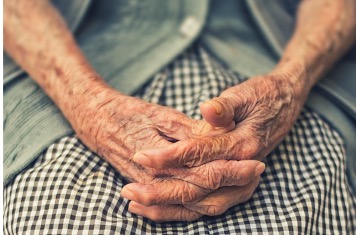As seniors journey through their golden years, celebrating milestones and special occasions becomes increasingly important for fostering a sense of joy, connection, and purpose. Whether it’s a birthday, anniversary, or another memorable event, these occasions provide opportunities to create cherished memories and strengthen bonds with loved ones. Below, Donna Hurley of Fresno highlights the importance of celebrating milestones in the lives of seniors and explores creative ways to honor these special occasions within senior living communities.

The Importance of Celebrating Milestones
Celebrating milestones and special occasions holds significant importance for seniors’ overall well-being and quality of life. These events provide opportunities for socialization, reminiscing, and meaningful connections with friends, family, and fellow residents. By acknowledging and celebrating milestones, seniors feel valued, loved, and appreciated, which contributes to their emotional and psychological well-being. Additionally, honoring these occasions can help combat feelings of loneliness, isolation, and depression commonly experienced by seniors, promoting a sense of belonging and community within senior living environments.
Creative Ways to Honor Special Occasions
Personalized Celebrations: Tailor celebrations to honor the individual preferences and interests of each senior resident. Consider organizing themed parties, decorating communal spaces, and preparing favorite foods or desserts to make the occasion truly special.
Intergenerational Activities: Facilitate intergenerational activities that bring together all residents, their families, and younger members of the community. Organize craft sessions, storytelling sessions, or musical performances involving children or grandchildren to create meaningful connections across generations.
Memory Lane Displays: Create memory lane displays featuring photos, mementos, and memorabilia from the person’s life to celebrate their journey and accomplishments. Display these items in common areas or communal spaces for both residents and visitors to enjoy and reminisce together.
Virtual Celebrations: Utilize technology to host virtual celebrations for those who may be unable to attend in-person events. Organize video calls with family members, friends, or loved ones to share well-wishes, stories, and special moments from afar.
Community Outings: Plan community outings to local attractions, parks, or restaurants to celebrate in a different setting. Arrange transportation and coordinate group activities to ensure everyone can participate and enjoy the festivities together.
Volunteer Opportunities: Incorporate volunteer opportunities into milestone celebrations to give back to the community and promote a sense of purpose and fulfillment among seniors. Organize group activities or charity drives that align with the senior’s interests and passions.
Reminiscence Therapy: Engage in reminiscence therapy sessions focused on recalling fond memories, significant life events, and meaningful experiences. Use storytelling, photo albums, or themed discussions to facilitate reminiscing and connection among residents.
Conclusion
Celebrating milestones and special occasions within senior living communities serves as more than just a formality—it is an integral aspect of enhancing the residents’ lives. These events hold profound significance, offering moments of joy, connection, and reflection that contribute to the overall well-being and quality of life of seniors. By embracing creativity, compassion, and a sense of community, senior living communities can create memorable and meaningful celebrations tailored to honor the unique journey and contributions of each resident.
Furthermore, these events play a crucial role in combating feelings of loneliness and isolation commonly experienced by seniors. By fostering a culture of inclusivity and belonging, senior living communities can create spaces where residents can form meaningful relationships, cultivate new friendships, and combat social isolation—a factor that has been shown to have adverse effects on both physical and mental health in seniors.
By prioritizing joy, connection, and belonging, senior living communities create environments where seniors can thrive, feel supported, and lead fulfilling lives even in their later years. Let us continue to champion these celebrations, fostering a culture of joy, connection, and belonging that enriches the lives of seniors within our communities.


